Garden Walls: Gabion Evolves From Functional to Fabulous
http://decor-ideas.org 03/06/2015 04:13 Decor Ideas
In February, Seattle hosted the 27th annual Northwest Flower & Garden Show at the Washington State Convention Center. With 23 show gardens, nine city-living displays (balcony gardens aimed at apartment and condo dwellers) and more than 300 vendors, the show offered abundant inspiration and motivation to get out in the garden.
One of the standout trends from this year’s show was the use of gabions. From benches filled with colored glass bottles to walls with a mix of rock, moss and twinkle lights, it’s obvious this once purely functional landscape feature has taken a creative turn and found a variety of new uses in the garden.
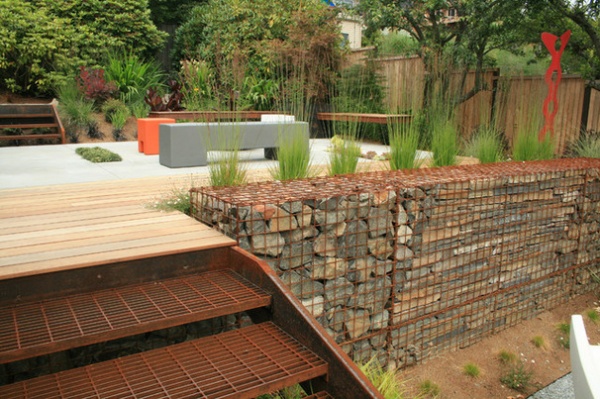
The basics: Gabions are metal cages or boxes filled with rocks or other usually earthen materials, often used as retaining walls or other outdoor walls. The cages are most commonly made of stainless, galvanized or powder-coated steel mesh panels, wired together using spiral binders or ring fasteners in the shape of a rectangle. Due to a gabion’s weight, frictional strength and ability to conform to the ground’s contours, it doesn’t require a foundation.
Cost: Gabions are considered a cost-effective landscape feature. The steel cages are most commonly made of welded 3-inch mesh and cost about $30 to $40 per cubic yard. The fill is where costs can fluctuate greatly. If recycled concrete from the site is used, the cost can be quite inexpensive. If decorative glass bottles or slate, for example, are used, the price would be much higher.
Pros:
Ease of installation. Due to its ability to conform to the ground’s contours once filled, a gabion wall can yield to changes in soil conditions or earth movement, making a foundation unnecessary. Site preparation is minimal beyond clearing the ground of plants and debris and making sure the ground is level where the wall is to be placed.Longevity. A major contributor to longevity is the gabion’s high permeability. Water can pass through the voids between the rock, eliminating the buildup of hydrostatic pressure and reducing the potential for shifting or warping over time. Also, the inherent strength of materials that won’t corrode over time makes gabion walls built to last. Environmental and sustainable qualities. If recycled concrete or rock found onsite during construction is used, the amount of waste hauled to a landfill and the associated fuel costs are greatly reduced.Aesthetic appeal. Gabions have the ability to contextually tie structures to their natural surroundings.
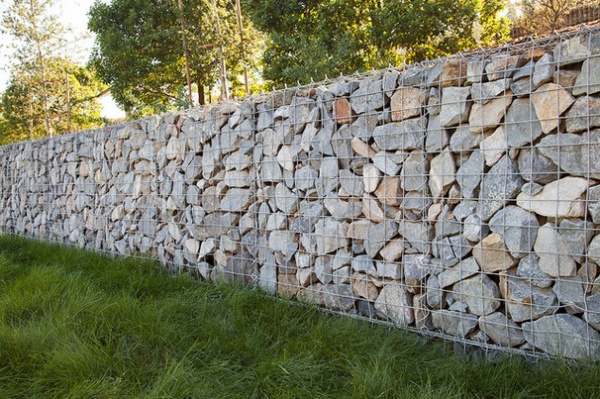
Cons:
Bulk. A gabion wall, planter etc. takes up a lot of space due to its girth. It may not be suited for a small garden, where its proportions can overwhelm a space.Wildlife habitat. Small critters can take up residence in spaces between the rock fill. However, depending on your outlook, this can be a positive.Special considerations: When choosing the filler for a gabion retaining wall, it’s important to make sure the material is large enough to be held inside the cage (usually 3 inches in diameter or more).
Maintenance: There really is no maintenance involved.
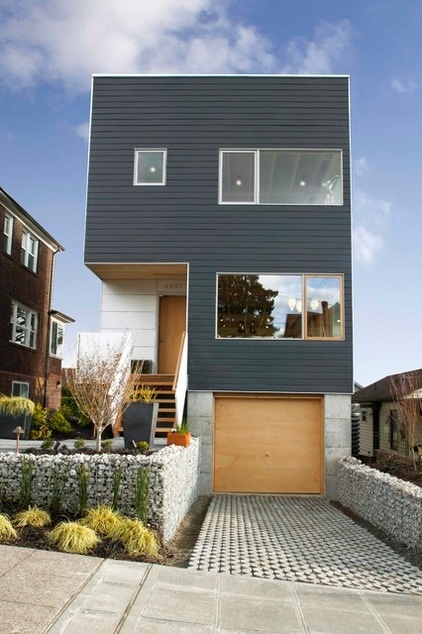
How to Use Gabion Walls
Retaining walls. The gabion was developed for practicality: to retain a slope, prevent erosion along a shoreline or fortify a military outpost. Landscape architects and designers are now finding new ways to maximize not only its functionality in the landscape but also its ability to make an aesthetic impact.
This gabion wall serves as a decorative retaining wall in a Seattle front garden.
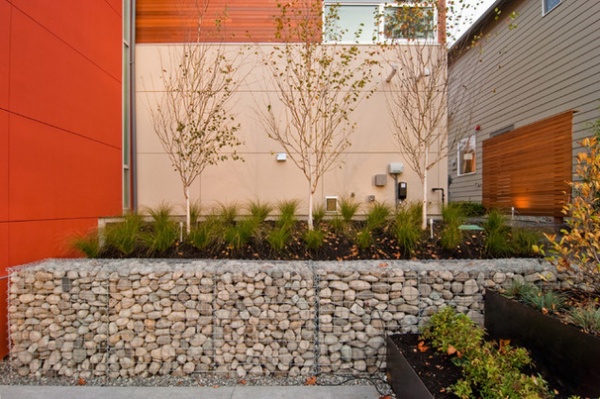
Here the warm hues in the round river rock complement the sand and terra-cotta tones used on the exterior walls of this home.
Tip: When using gabions for retaining walls, make sure the fill is dense enough to support the load created by the earth it’s holding back. Check your local codes and hire an architect or engineer to calculate the loads.
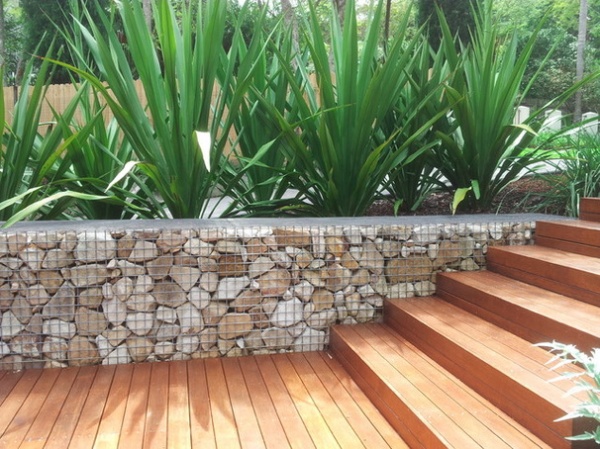
Benches or raised planters. Due to the thickness of the box, typically between 1 foot and 2 feet wide, a low gabion wall or planter can double as a garden bench.
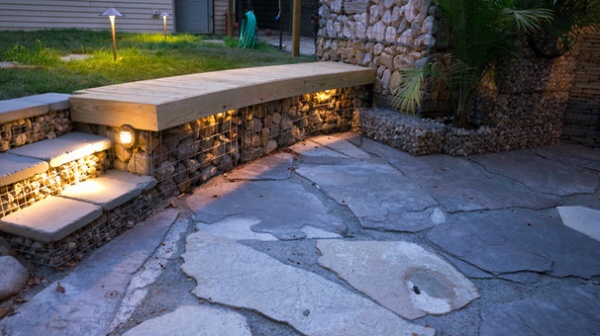
For a polished look, cap the gabion bench or raised planter with stone or wood. By doing so you can tie in materials found elsewhere in the landscape, such as a patio surface, wood deck or structure.
Design tip: Include lights to accent the materials used to fill the cages.
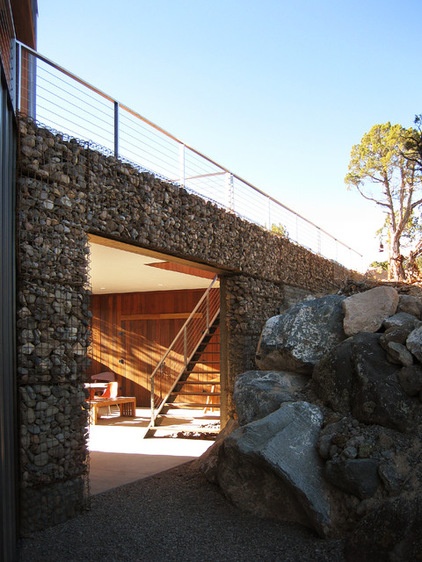
Exterior walls. We’ve all heard the term “outdoor room.” A gabion wall can quite literally define one outdoor space from another. It also helps to create a cohesive transition from the structure of the home to the more unstructured garden beyond.
See more of this Utah house
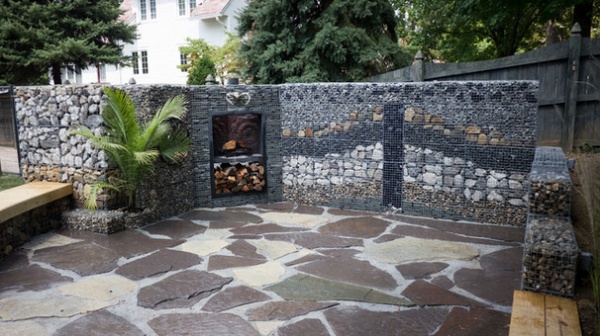
While a gabion wall has obvious aesthetic qualities, it also has practical appeal. In warm climates the shade cast by the wall can help cool a space while still allowing air to flow through the cracks.
Design tip: Get creative by using stones of different shapes, sizes and colors to create interesting patterns in the wall. You can reduce costs by placing decorative materials on the visible sides of the cage and filling the inside with recycled concrete.
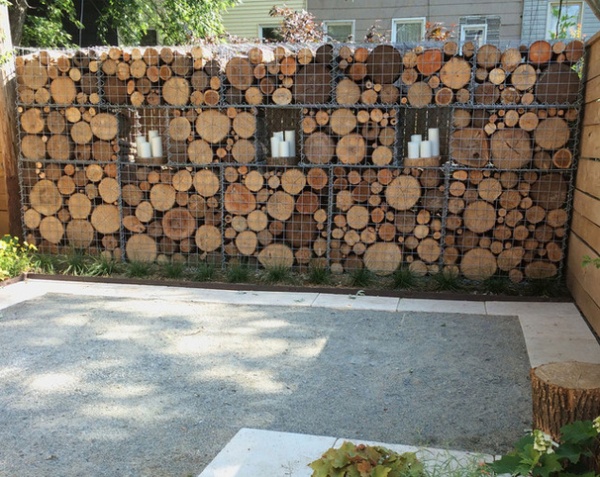
Rock and concrete aren’t the only options for fill. You can recycle a fallen tree by using the stacked cut rounds.
Design tip: Leave spaces in the wall for holding candles or other small items. (And, of course, don’t leave burning candles unattended.)
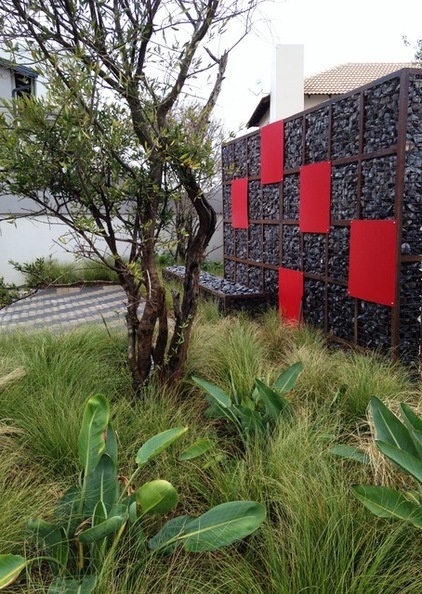
Design tip: Visually break up a large gabion wall by adding colorful panels.
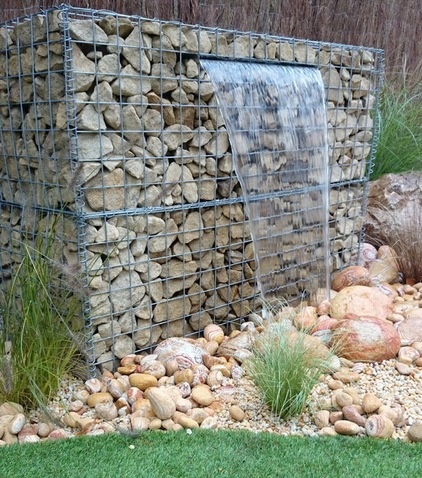
Decorative garden features. Recently, the gabion has moved beyond its purely functional roots into the realm of decorative use. It can be used in the garden in a variety of unexpected ways, including as fences and gates.
A gabion structure can be used as a frame for almost any garden feature. Here a gabion cage surrounds a contemporary water feature …
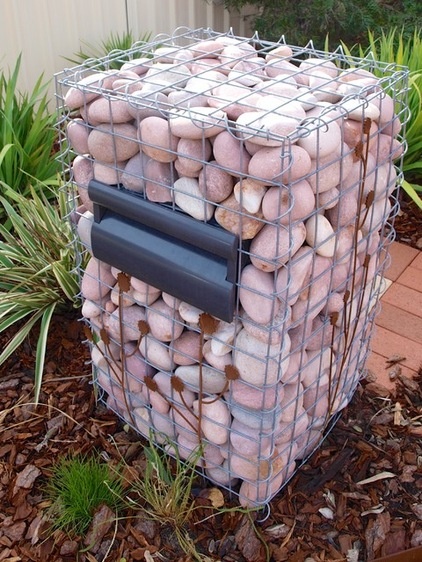
… and in this case, a mailbox.
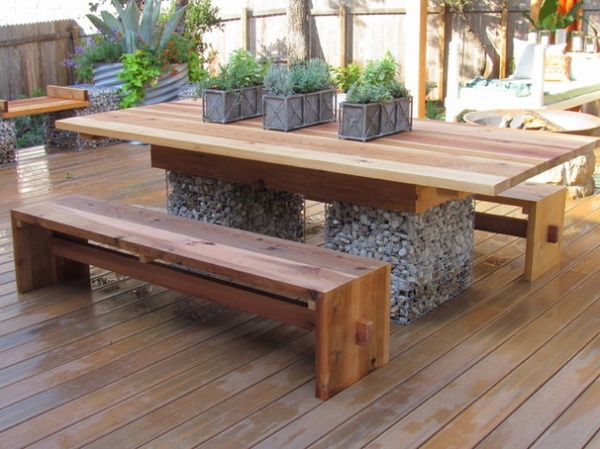
There are subtle ways to include gabions in your garden. For example, surround the base of a picnic table or the legs of a bench with a gabion cage. Small details can be enough to get the effect.
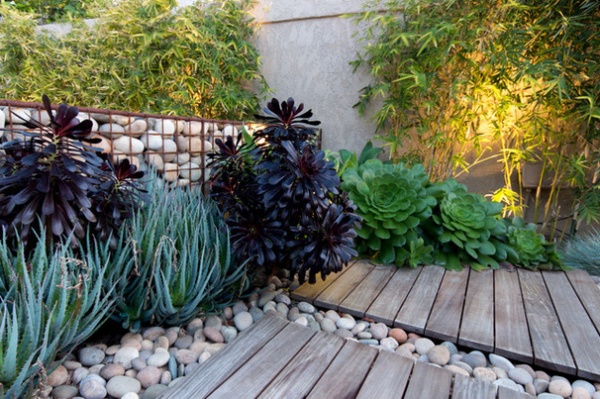
With plants. Gabion can have an industrial or somewhat raw appearance. Depending on your tastes, you may want to soften this look. One way is to surround the base with plantings that accentuate the color of the stone.
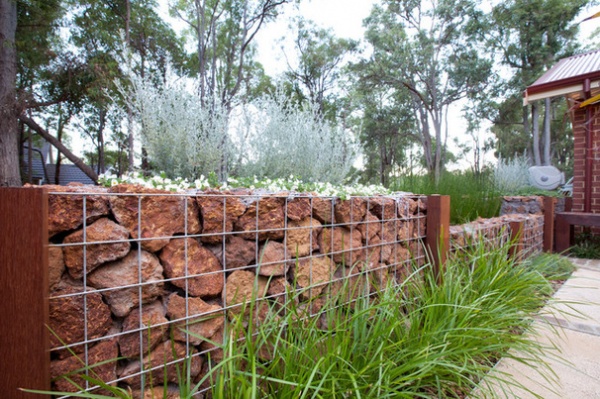
Another option is to construct a gabion wall around an enclosed planter to prohibit soil from running through the rock. The result: a wall with life sprouting from the top.
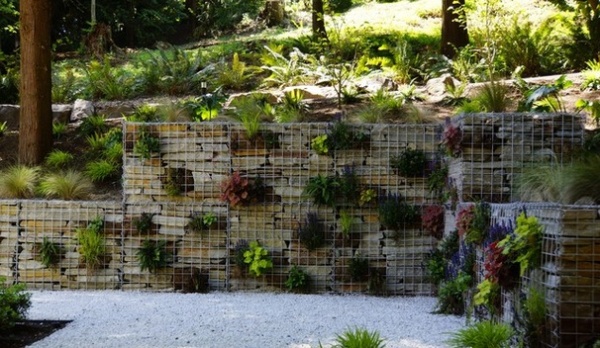
You can soften the look of a gabion wall with pocket plantings too. Add color and texture by choosing plants that thrive in rockeries, such as ferns, sedums and ground covers.
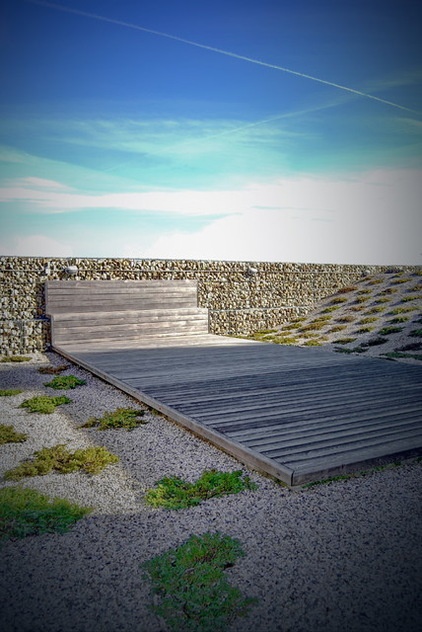
Whether you decide to use a gabion in your garden for practical and functional reasons or purely for aesthetic benefits, it’s clear the possibilities are plentiful.
More: Give Your Garden an Industrial Edge
Related Articles Recommended












